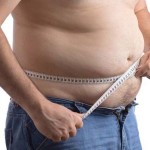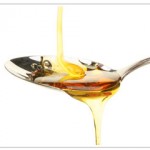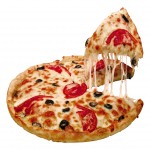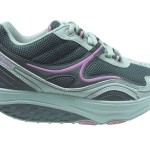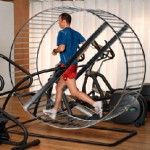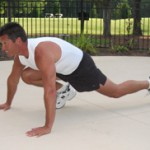Some Reasons to Eat More Saturated Fat
Welcome Back – no you haven’t come to the wrong blog, nor have I made a mistake in the headline – this blog is about why we need to eat fat – specifically saturated fat.
Remember it was not in the not-so-distant past (about 1971), that the medical establishment looked a couple of poorly done experiments and then decided that all fats equal, and are equally life threatening and ‘EVIL.
The prognosis was that all fats are bad for you and are the root cause of all heart disease, obesity and other ailments. This is utter crap! Things have changed in the last couple of years (although with dieticians & the Governments it is still slow going).
Current medical thinking on fats is that some are good, if not downright essential to your well being & health – fats like olive oil and canola oil*—but others are bad for you—trans fats and all saturated fats. It is an improvement but it is still far from the truth.
There is in-built resistance to the latest research from the ‘Fats are evil camp’ just that now they are still offering advice to the tune of: “You should limit your intake of saturated fats & avoid them wherever possible.” This is usually followed by these ‘educated’ pundits saying: which have been proven to raise cholesterol and cause heart disease.” Their over-arching belief is that saturated fat is bad, if not deadly for you.
You can see with just a glance at my suggested meal plan that I’ve included saturated fats. In fact I fully advocate fatty cuts of meat, chicken with the skin, bacon, eggs, butter, coconut oil, organic lard, and heavy cream in the Lose 20 in 30 Fuel Program. Aren’t I worried that these foods will increase your risk of heart disease and raise your cholesterol? Nope, not at all. In fact, I encourage you to make these important fats a regular part of your healthy diet. Why? Because humans need them and here are just a few reasons why.
1) Improved cardiovascular risk factors
Though you may not have heard of it on the front pages of the newspapers, online news source, or local television or radio news program, saturated fat plays several key roles in your cardiovascular health. The addition of saturated fat to your diet reduces the levels of a substance called lipoprotein (a)—pronounced “lipoprotein little a” and abbreviated Lp(a)—the presence of which correlates strongly with an increased risk for heart disease.
Currently there are no medications to lower this substance and the only dietary means of lowering Lp(a) is eating saturated fat. I know that you didn’t hear that on the nightly news, or read it in the papers. Also, believe it or not – eating saturated (and other) fats also raises the level of HDL, the so-called good cholesterol.
Lastly, research has shown that when women diet, those who eat the greatest percentage of the total fat in their diets as saturated fat lose the most body fat.
2) Stronger bones
Our bone mass declines as we get older. It seems to accelerate once we pass 40, especially for women. It is impossible to watch TV without being told that you need calcium for your bones. But, and this is a big but, can you remember ever being told that saturated fat is necessary for calcium to be most effectively incorporated into your bones?
According to one of the foremost research experts in dietary fats and human health, Mary Enig, Ph.D., there’s a case to be made for having as much as 50 percent of the fats in your diet as saturated fats for this reason.

Red Meat - a great source of fatty goodness - you can trim off the excess if you have lingering concerns...
That’s far below the 7 to 10 percent suggested by the mainstream Doctors, Dieticians and Nutritionists.
Her research suggests that by following the advice to avoid saturated fats and use vegetable oils instead, most women lose bone mass, develop osteoporosis, and need to be put on prescription medications plus calcium to try to recover the bone loss they suffer in middle age.
Food for thought. Google her and make up your own mind.
3) Improved liver health
Strangely enough adding saturated fat to your diet has been shown to make your liver reduce its own fat stores. A less fatty liver is a more efficient liver and given it is the filter for our entire body the more efficient the better!!
More importantly clearing fat from the liver is a critical first step in reducing belly fat storage. Then there is the fact that saturated fat has been shown to protect the liver from the toxic insults of alcohol and medications, including acetaminophen and other drugs commonly used for pain and arthritis, such as nonsteroidal anti-inflammatory drugs or NSAIDs.
In fact in some research the inclusion of saturated fats has enabled the liver to reverse the damage once it has occurred. Since the liver is the lynchpin of a healthy metabolism, anything that is good for the liver is good for getting rid of fat in the middle. Polyunsaturated vegetable fats do not offer this protection.
4) Healthier lungs
For our lungs to work properly their airspaces need to be coated with what is called ‘lung surfactant’. Sounds horrible, but without this layer our lungs do not work as well. Guess what this layer is made up of – yep – the fat content of lung surfactant is 100 percent saturated fatty acids.
Replacement of these critical fats by other types of fat makes the surfactant less efficient, almost faulty and potentially causes breathing difficulties.
Absence of the correct amount and composition of these saturated fatty acids can lead to a collapse of your lung’s airspaces and create respiratory distress. Infant respiratory distress syndrome is a direct result of this missing surfactant.
Some researchers feel that the wholesale substitution of partially hydrogenated (Trans) fats for naturally saturated fats in commercially prepared foods may be playing a role in the rise of asthma among children. Fortunately, the heyday of Trans fats is ending and their use is on the decline.
Unfortunately, however, the continued unreasoning fear of saturated fat that leads to the replacement of natural saturated fats with unhealthy Trans fats continues. We use an overabundance of polyunsaturated vegetable oils, which may prove just as unhealthy.
5) Healthy brain
Your brain is mainly made up of two substances that we have been taught to fear: fat and cholesterol. Though the importance of Omega # fatty acids (EPA & DHA) is now widely recognised, the majority of the fats that our brains require are of the saturated type. A diet low in saturated fats actually robs your brain of the raw materials it needs to function optimally.
6) Proper nerve signalling
The saturated fats found in substances like butter, lard, coconut oil, and palm oil, all function directly as signalling messengers that influence our metabolism through the mechanism of hormones. Such
critical jobs as signalling the appropriate release of insulin, or cortisol or Leptin are all dependent upon the fatty acids found in saturated fats.
Our nerves are sheathed in substances made from saturated fats. Saturated fats are vital to the proper functioning of our nervous & hormonal system.
7) Stronger immune system
Lastly the Saturated fats found in butter and coconut oil (in particular fatty acids called myristic acid and lauric acid) play key roles in the health of our immune system.
Without these saturated fatty acids being present in sufficient quantities in white blood cells thes ‘hunter Killers’ suffer an impaired ability to recognize and destroy foreign invaders, such as viruses, bacteria, and fungi. By the by human breast milk is quite rich in myristic and lauric acid, which have potent germ-killing ability and is touted as vital for the development of a fully functioning immune system in infants.
However the importance of these fats remains after infancy; we need dietary replenishment of them throughout adulthood, middle age, and into seniority to keep the immune system operating efficiently not only against infections but also against the development of cancerous cells.
I’ll be back next time with the rules for including fat healthily in your diet…Till then pass this on to your friends, Tweet or Face Book us…
Be well!!






